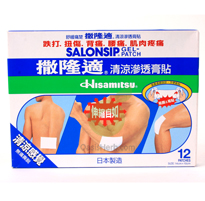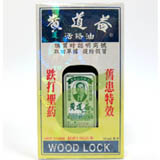Background
If you have difficulty failing asleep, frequent awakenings, early morning awakenings, daytime drowsiness, snoring, or sleep apnea, you might be suffering from insomnia.
 Insomnia is a common problem in the US with over 50 million Americans reported having a sleep-related problem. It occurs more frequently in women, especially postmenopausal women, and in the elderly. Other factors that predispose a person to have insomnia include snoring and co-morbid psychiatric or medical illnesses.
Insomnia is a common problem in the US with over 50 million Americans reported having a sleep-related problem. It occurs more frequently in women, especially postmenopausal women, and in the elderly. Other factors that predispose a person to have insomnia include snoring and co-morbid psychiatric or medical illnesses.
Diagnosis
Diagnosing insomnia requires a thorough medical history and a physical examination. The thorough medical history is needed to find out any behaviors such sleep habits, drug and alcohol consumption, nicotine and caffeine intake, co-morbid illnesses and sleep environment that contribute to insomnia, while a complete physical examination is used to rule out any medical conditions such as depression.
Non-pharmacologic interventions
Your physicians might first recommend non-pharmacologic interventions for you. These non-pharmacologic interventions might include 1) sleep-hygiene education, 2) stimulus-control therapy, 3) relaxation therapy, and 4) sleep-restriction therapy, collectively referred to as Cognitive Behavioral Therapy (CBT).
1) Sleep-hygiene education includes:
– Maintaining a regular sleep schedule
– Exercising regularly but avoiding exercise too close to bed-time
– Avoiding stimulants like caffeine or nicotine right before bed-time.
– Ensuring a comfortable sleep environment (i.e., eliminate noises, decrease light, and maintain a comfortable room temperature)
– Avoiding negative thinking or focusing on a bedside clock.
2) Stimulus-control therapy focuses on establishing an association between bed and sleep. This includes:
– Going to bed only when tired
– Use the bedroom only for sleeping
– Establish a normal sleep-wake schedule, and avoid napping.
– Leave the bedroom if unable to fall asleep within 15 minutes and to return to bed only when tired.
3) Relaxation therapy includes progressive muscle relaxation, biofeedback, and meditation.
4) Sleep restriction therapy allows patients to improve sleep efficiency by temporarily inducing sleep deprivation.
About 50% to 80% of the patients respond to the above therapies. Stimulus control and sleep restriction are the most effective non-pharmacologic interventions.
Prescription Agents
If non-pharmacological therapies do not work, your physicians might prescribe hypnotics for you. The three most common classes of hypnotics are benzodiazepines, benzodiazepines-receptor agonist and melatonin-receptor agonists.
Benzodiazepines
Benzodiazepines are drugs that can make you sleep (hypnotics), reduce your excitement (sedative) and reduce your anxiety (anxiolytics). Commonly prescribed benzodiazepines for insomnia include estazolam, flurazepam, quazepam, temazepam and triazolam.
Compared with other sleeping pills, these products are more effective in keeping your asleep (sleep maintenance) than making you fall asleep (sleep latency). However, patients taking these medicines for a long time might experience daytime sleepiness, dizziness and impaired memory.
Before taking these medicines, you need to know that these products are schedule IV medications which means they have potential for abuse and dependence. Patients taking these medications for few days can develop a physical dependence and may consequently experience withdrawal symptoms such as anxiety and rebound insomnia upon discontinuation.
Physical dependence on these drugs is particularly troublesome. Some patients will end up taking higher and higher dose and can not fall asleep without these medicines. If you want to stop taking these medicines, you need to ask your doctors for help.
Couple with the fact that there are no studies demonstrating of the efficacy of these medicines to relieve insomnia symptoms for more 12 weeks, it is advised not to use these products for long term.
Benzodiazepines-receptor agonist
Benzodiazepines-receptor agonists such as zolpidem (Ambien), zaleplon (Starnoc), and eszopiclone (Lunesta) are compounds that have fewer unwanted side-effects than benzodiapzepines. These agents are supposed to produce less rebound insomnia, have less potential for abuse, be associated with fewer dependency problems, and cause less of a hangover effect compared with benzodiazepines
Nonetheless, reports have been published indicating the abuse and dependence potential of these products.
When compared with zaleplon (Starnoc), zolpidem (Ambien) and eszopiclone (Lunesta) have a quicker onset of action and longer half-life. These properties allow these 2 products to be used in patients who have difficulty falling asleep and have problems sleeping through the night. Also, these products are approved for long-term.
Zaleplon (Starnoc) has a rapid onset of action with a shorter half-life and is usually used in patients who wake up in the middle of the night and require a pill that will quickly put them back to sleep for another few hours without causing any hangover effects.
Melatonin-receptor agonists
Ramelteon(Rozerem) is the first and only agent in a new class of drugs known as melatonin-receptor agonists. It is also the only sedative hypnotic not classified as a controlled substance.
Although Rozerem is indicated only for the treatment of insomnias characterized by delayed sleep onset, recent studies have found that Rozerem can also increases total sleep time. The most common adverse effects associated with Rozerem include somnolence, fatigue, and dizziness, with no evidence of rebound insomnia.
As with Lunesta and Ambien, Rozerem can be used for long term. However, patients are advised not to take Rozerem with or immediately after a high-fat meal because a high-fat meal will delay the absorption of Rozerem and its beneficial effects.
Nonprescription agents
Nonprescription agents are not very useful for insomnias. They are recommended for short term use.
Antihistamines (diphenhydramine (Unisom, Sominex, Sleep-Aid) and doxylamine (Unisom))
This group of drugs should only be used in patients with infrequent episodes of insomnia since patients quickly develop tolerance to the sedative effects. Also, there is no clinical data supporting the long-term effectiveness of these agents. Common adverse effects associated with these drugs include hangover effect, dizziness, dry mouth, and constipation.
Melatonin (Sleep MD, Rapid Sleep PM ,Super Snooze)
Melatonin is a dietary supplement advertised for treating insomnia. It has fewer adverse effects compared with other natural remedies but does not have much data supporting its efficacy. The lack of minimum effective dosage and the absence of government regulation on its ingredients make melatonin product less idea for frequent insomnia.
Valerian (Peaceful Sleep, Quiet Life, Puralin, Similasan, Sleep MD)
Valerie is also a nutritional supplement that is not regulated by the FDA. There is relatively few data supporting its use for insomnia. Adverse effects include dizziness, nausea, headache, and upset stomach.
Conclusions
When treating insomnia, patients should try to adopt the non-pharmacological approach first since these therapies have minimal adverse effects and do not cause physical dependence. Only when non-pharmacological therapies fail work, should patients then consider pharmacologic agents such as benzodiazepines-receptor agonist or melatonin-receptor agonists which have fewer dependency problems and rebound insomnia.
Please visit us as healthreason.com





